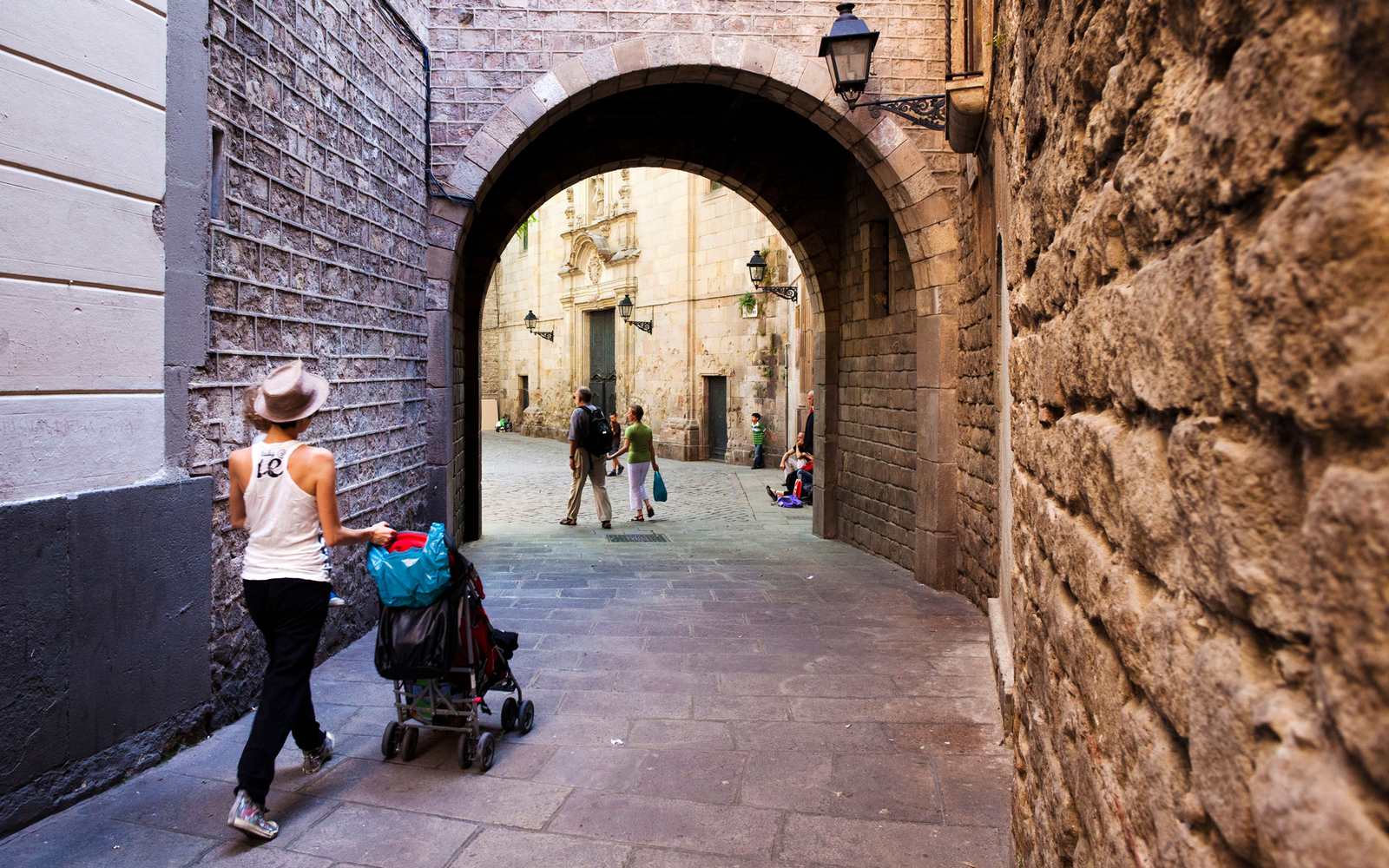
Few cities in the world boast more delightful narrow, winding alleyways or secret, hidden squares than Barcelona. Here are the ones you shouldn't miss on your next trip to the Catalan capital.
If you'd like to explore Barcelona's authentic, gritty nightlife scene, look no further than the dive bars that line this narrow street on the border of the Raval and Sant Antoni neighborhoods. By day it may not look like much, but at night it comes alive, with music and young people spilling out of every doorway. Local favorites include Betty Ford, Negroni, and Bar 33/45. Be warned: the street is also a popular haunt for pickpockets, so keep an eye on your valuables.
Of all of Barcelona's neighborhoods, none is more picturesque than El Born, with its winding lanes and many hidden treasures. One of its narrowest, most alluring streets is Calle Flassaders, with its array of designer boutiques and tiny eateries. For fans of the writing of Carlos Ruiz Zafón, Calle Flassaders also provides the sinister backdrop for his book, The Angel's Game.
Related: Best Beaches in Barcelona
The upmarket Eixample district was designed in the mid-19th century by urban architect Ildefons Cerdà in an exact grid pattern that's criss-crossed with broad avenues and octagonal city blocks. Architecture enthusiasts are strongly advised to venture off the main strip on Passeig de Gracia to see some of the city's most astonishing buildings. There are too many breathtaking modernist facades to mention, but examples include the chic apartment blocks on the corners of Calle Muntaner and Calle Consell de Cent, and Calle Bailén and Calle Valencia.
Most people know of only one good reason to visit this part of town—to watch FC Barcelona at "Camp Nou." The lesser-known excuse is a delightful street called Carrer d'Evarist Arnús, which is not only home to a charming row of tiny townhouses but also to Bangkok Café, Barcelona's best and only truly authentic Thai restaurant.
Typical of the laid-back district of Gracia, Calle Torrijos is perfect for a leisurely stroll from sunny, green Placa Virreina, all the way down to the Abaceria Central market. Aside from all the delightful neighborhood stores, including a pastry shop, a Mexican deli, and several tiny boutiques and cafés, this road is also home to every ex-pat's favorite: "Cine Verdi," an English-language movie theater.
Considering that this passageway links two of Barcelona's main thoroughfares (Passeig de Gracia and Rambla de Catalunya), it's surprising how few people know about it. The charming Passatge de la Concepció, a tranquil oasis away from the hustle and bustle of the city, is home to several excellent restaurants, including Boca Grande, Petit Comitè, Tragaluz and Mordisco.
Hidden deep in the Gothic quarter, Plaça de Sant Felip Neri is one of the city's most historical spots. Built on the site of a medieval cemetery, it was destroyed by a bomb during the Spanish Civil War—an infamous event that is born witness to by the shrapnel damage on the walls of the church of San Felipe Neri. After the war, the square was rebuilt by architect Adolf Florensa, and is now home to a boutique hotel and a small café, with a peaceful outdoor terrace.